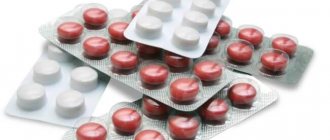Xylitol is a natural sweetener obtained from birch bark. Its main difference from sugar and other sweeteners is that it prevents the development of caries - that is, it is good for dental health. That is why xylitol is used in the production of toothpaste and chewing gum.
In addition, xylitol can withstand high temperatures and does not caramelize—which allows it to be used in yeast-free baked goods. On the other hand, xylitol affects yeast and the intestinal microflora of some people. What are its benefits and harms, what are the contraindications?
Properties of xylitol
The sweetener has a number of properties, it:
- Prevents the growth and reproduction of pathogenic microorganisms.
- Improves food safety.
- When used correctly, it helps cleanse the liver and gastrointestinal tract.
- Stimulates the secretion of gastric juice, improves digestion processes.
- Freshens breath and has a cooling effect.
- Improves the condition of tooth enamel and is used in the treatment of osteoporosis.
- Participates in metabolic processes, but is not considered essential.
Xylitol is often used in the treatment of dental diseases. This substance replaces sugar, but has the same sweetness and has a low GI.
Application
The substance is actively used in the dental industry to create:
- toothpastes and other hygiene products intended for oral care;
- lozenges with an antibacterial effect that stimulate salivation, are used in the treatment of otitis media, inflammatory diseases of a dental and otolaryngological nature;
- rinses designed to strengthen tooth enamel are also included in chewing gum.
In the food industry it is used as a sugar substitute due to its low glycemic index. The substance is used to create various sweets for diabetics.
Xylitol in products
It can be found in common food products if you carefully study the composition. So what does a popular sugar substitute contain:
- Canned fruits, most often we are talking about peaches and pineapples.
- Various chewing gums.
- Sweets produced for diabetics: cakes, sweets, cookies.
- Fruit juices sold in packages.
- Muesli, ice cream, muffins, processed meats and various baked goods.
- Preservation: jam, pickles.
More often, a sugar substitute is used to extend the shelf life of a product and give it certain organoleptic properties.
Sources
Natural xylitol, as already noted, is present in almost all plants containing fiber. This substance is found in berries, fruits, many vegetables, cereals and mushrooms.
Best materials of the month
- Coronaviruses: SARS-CoV-2 (COVID-19)
- Antibiotics for the prevention and treatment of COVID-19: how effective are they?
- The most common "office" diseases
- Does vodka kill coronavirus?
- How to stay alive on our roads?
Also, considerable reserves of xylitol are found in corn husks, birch bark and sugar cane.
Industrial xylitol is most often a product obtained from corn cobs or processed leafy tree raw materials. The largest exporter of sweetener is China.
In food, xylitol is found in baked goods, desserts, diabetic sweets, fruit juices, sausages, and chewing gum.
Benefits of xylitol
Let's list the beneficial properties of the substance:
- stimulates the production of enzymes that prevent the growth and reproduction of pathogenic agents;
- has a weak antibacterial effect;
- improves digestion and secretion of gastric juice;
- helps cleanse the liver and remove bile from the body;
- strengthens tooth enamel, cleanses it, heals oral tissues;
- used in the treatment of osteoporosis and prevention of the development of type 2 diabetes mellitus;
- improves the absorption of B vitamins necessary for the normal functioning of the body and nervous system;
- participates in metabolism; with moderate consumption, it improves the secretion of insulin, a pancreatic hormone.
The substance is useful for its antibacterial effect. It stimulates natural salivation. In case of insufficient enzyme production, it stimulates secretion. In the process of treating otitis, relieves inflammation.
In addition to stimulating digestion, it helps reduce blood sugar levels. It is used to create dietary products with low GI, indispensable when following a diet.
Instructions for use
The substance is used for several purposes:
- Helps in the preparation of sweet pastries, candies, torits, reduces calorie content and glycemic index.
- To extend the shelf life of the product, increase its shelf life, it is added to various preparations for the winter.
- A sugar substitute is also used as a means to cleanse the liver of toxins and harmful substances.
- For another purpose, it is rarely used; it can be used as a sweetener, adding in small quantities to tea or coffee, with limited sugar consumption.
Although the substance is considered relatively harmless in medicine, you should not use it in high dosages yourself. This practice can cause disturbances in the functioning of the body and its systems.
https://youtu.be/b45RfYqebj0
Sweeteners for weight loss
It's no secret that the amount of sugar we consume is directly related to our weight. According to research conducted by scientists, in order to achieve tangible results in losing weight, you need to reduce the amount of sugar in your diet. Conversely, in order to gain weight, you should consume more sugar. Nowadays, the problem of excess weight is relevant for a large number of people. Statistics say that every third person on Earth suffers from excess weight. That is why in the modern world so much attention is paid to sweeteners. The demand for them is growing every year.
Xylitol for liver cleansing
In medicine, it is also used to cleanse the liver, stimulates the outflow of bile, and removes toxins from the body.
What happens to the organ:
- when carrying out cleansing procedures, the secretion of enzymes improves;
- the bile ducts dilate, which facilitates the removal of toxins from the body;
- cleansing helps optimize the functioning of the urinary system.
Procedures of this nature are carried out on a regular basis, preferably once a week. If necessary, more often.
Xylitol in chewing gum
It is often included in dental products; chewing gum is no exception, although they can hardly be called such.
Why xylitol in their composition is useful, this component:
- Helps clean teeth from bacterial plaque;
- improves oral health, kills bacteria and harmful microorganisms.
Xylitol in combination with other components will not cause harm if used correctly. Chewing gum should not be chewed on an empty stomach; in large quantities it is also harmful.
Another substance makes tooth enamel whiter, but the effect can hardly be called pronounced.
Rescue from harmful fungi
Almost 80% of the world's population is infected with a fungus of the genus Candida, as some scientists say. One of the places where fungi multiply is the oral cavity. While other carbohydrate sweets promote the rapid growth of Candida, xylitol can prevent or completely stop this process.
Also, xylitol in combination with antifungal drugs is a component of therapy for the treatment of candidiasis, preventing the spread of fungus inside the body. Without receiving the sugar necessary for life, the fungi die.
Xylitol or fructose
Both substances replace sugar, but their characteristics are different. If we compare, fructose loses in the following indicators:
- Higher glycemic index.
- It damages your teeth and causes you to feel constantly hungry.
- Not suitable for people with metabolic disorders in the body.
Fructose, as a monosaccharide, also burdens the liver; it negatively affects the functioning of the organ, which aggravates existing problems.
Both substances are of natural origin and are used in the creation of dietary products. But if there are signs of diabetes, disorders of the liver and biliary system, it is better to give preference to xylitol rather than fructose.
general characteristics
The discovery of xylitol (chemical formula - C5H12O5) occurred at the end of the 19th century almost simultaneously in two countries - Germany and France. People with diabetes began to actively use the new sweet substance as a safe alternative to sweets. In its pure form it is a white crystalline powder that can dissolve in water, alcohols, and acetic acid.
Content:
- general characteristics
- Role in the body
- Xylitol: benefits and harms
- Areas of application
- Effect on teeth
- Rescue from harmful fungi
- Diet sweets
- Sources
- Daily norm
- Birch sugar as a medicine
Xylitol is the only carbohydrate whose taste and appearance are identical to table sugar. But what made the substance even more popular is the fact that it can be obtained from almost any fibrous raw material of plant origin. Therefore, its other name is wood or birch sugar. Xylitol was first produced in Finland from birch bark.
Xylitol or sorbitol?
These are polyhydric alcohols with similar characteristics in all respects.
What is the difference between sorbitol:
- lower glycemic index;
- the degree of sweetness is less, but the calorie content is identical;
- has a pronounced laxative effect;
- not dangerous for dogs, causes only mild digestive upset in animals.
It is worth paying attention to the degree of sweetness of the substitute; when added to food, it increases the calorie content. Less xylitol is required because its sweetness is higher, which means the calorie content of the food will be lower.
Sorbitol also has a strong laxative effect and is part of medications that normalize the functioning of the gastrointestinal tract. But using it if you are prone to disorders and disturbances in the digestive tract is strictly prohibited.
Recommendations
- Safety Data Sheet for Xylitol from Fisher Scientific. Retrieved November 2, 2014.
- "Xylitol." Chemspider
. Retrieved 2015-05-13. - ^ a b
"Food - EPA - European Polyol Producers Association."
polyols-eu.org
. Received 2019-02-07. - ^ a b c
Riley, P;
Moore, D.; Ahmed, F; Sharif, Missouri; Worthington, Hawaii (March 26, 2015). “Xylitol-containing products for the prevention of dental caries in children and adults.” Cochrane Database of Systematic Reviews
(3): CD010743. Doi:10.1002/14651858.CD010743.pub2. PMID 25809586.Fold resume. - ^ a b c d f
Ur-Rehman, S;
Mushtaq, Z; Zahoor, T; Jamil, A; Murtaza, M.A. (2015). "Xylitol: a review of bioproducts, uses, health benefits and associated safety issues." Critical Reviews in Food Science and Nutrition
.
55
(11): 1514–28. Doi:10.1080/10408398.2012.702288. PMID 24915309. S2CID 20359589. - Rolstad, Ronald E. (2012). Chemistry of food carbohydrates
. John Wiley and Sons. paragraph 176. ISBN 9780813826653. Retrieved 2012-10-20. - Jain, H; Moulay, S (March 2014). "Review of various methods and methods for producing pentose sugar: xylitol." International Journal of Food Science and Nutrition
.
65
(2): 135–43. Doi:10.3109/09637486.2013.845651. PMID 24160912. S2CID 39929588. - Felipe Hernandez-Perez, Andres; de Arruda, Priscila Vaz; Sene, Luciana; da Silva, Silvio Silverio; Kumar Chandel, Anuj; de Almeida Felipe, Maria das Grasas (2019-07-16). "Xylitol Bioproduction: State of the Art, Industrial Paradigm Shift, and Opportunities for Integrated Biorefineries." Critical Reviews in Biotechnology
.
39
(7):924–943. Doi:10.1080/07388551.2019.1640658. ISSN 0738-8551. PMID 31311338. S2CID 197421362. - ^ a b c d
"Xylitol". Drugs.com. 2022. Retrieved October 12, 2022. - “Xylitol; from Part 172, Food Additives Authorized for Direct Addition to Food for Human Consumption, Special Dietary and Nutritional Supplements; Section 172.395.” Code of Federal Regulations, Title 21
. US Food and Drug Administration. 2012-04-01. - ^ a b c d
"Xylitol". Diabetes.co.uk. Retrieved October 28, 2022. - Burgos, Karen; Subramaniam, Persis; Arthur, Jennifer (21 November 2016). "Reform Guide for Small and Medium-sized Companies" (PDF). Leatherhead Food Research through the Food and Drink Federation.
- ^ a b c d f
“Is xylitol good for your teeth?” NHS Eat well. April 13, 2016. Retrieved October 28, 2022. - ^ a b
"Xylitol Chewing Gum/Lozenges and Reducing the Risk of Tooth Decay - Scientific Support for Health Claims Associated with Xylitol Chewing Gum/Lozenges and Reducing the Risk of Tooth Decay."
EFSA Magazine
.
6
(11): 852. November 2008. doi:10.2903/j.efsa.2008.852. - “Policy on the Use of Xylitol for Dental Caries Prevention” (PDF). Reference Guide
.
33
(6): 42–44. 2010. Retrieved 2012-03-14. - Mikenavch, Steffen; Engopal, Veerasamy (2012). "Effect of xylitol versus sorbitol: a quantitative systematic review of clinical trials." International Dental Journal
.
62
(4): 175–188. Doi:10.1111/j.1875-595X.2011.00113.x. PMID 23016999. - Mikenavch, Steffen; Engopal, Veerasamy (2012). "Anticariogenic effect of xylitol versus fluoride—a quantitative systematic review of clinical trials." International Dental Journal
.
62
(1): 6–20. Doi:10.1111/j.1875-595X.2011.00086.x. PMID 22251032. - Cederling, E (April 2009). "Controversy surrounding xylitol." European Journal of Dentistry
.
3
(2): 81–2. Doi:10.1055/s-0039-1697411. PMC 2676064. PMID 19421385. - ^ a b
"Scientific Opinion on the Substantiation of Health Claims Associated with the Sugar Substitutes Xylitol, Sorbitol, Mannitol, Maltitol, Lactitol, Isomalt, Erythritol, D-Tagatose, Isomaltulose, Sucralose and Polydextrose and Supporting Dental Mineralization by Reducing Dental Demineralization and Reducing postprandial glycemic response."
EFSA Magazine
.
9
(4): 2076. April 2011. doi:10.2903/j.efsa.2011.2076. - “Scientific Opinion to Substantiate Health Claims Associated with Sugar-Free Chewing Gum Sweetened with Xylitol and Plaque Acid Neutralization (ID 485), Dental Mineralization Support (ID 486, 562, 1181), Plaque Reduction (ID 485, 3085). ) ". EFSA Magazine
.
9
(6): 2266. June 2011. doi:10.2903/j.efsa.2011.2266. - ^ a b
Azarpazhooh, A;
Lawrence, HP; Shah, P. S. (August 3, 2016). "Xylitol for the prevention of acute otitis media in children under 12 years of age." Cochrane Database of Systematic Reviews
(8): CD007095. Doi:10.1002/14651858.CD007095.pub3. PMID 27486835. - Marom, Tal; Marchisio, Paola; Tamir, Sharon Ovnat; Torretta, Sarah; Gabriel, Chaim; Esposito, Suzanne (February 12, 2016). "Complementary and alternative treatments for otitis media." Medicine
.
95
(6):e2695. doi:10.1097/MD.0000000000002695. ISSN 0025-7974. PMC 4753897. PMID 26871802. - ^ a b
Sally, Christa;
Lehtinen, Markus J.; Tiihonen, Kirsti; Ouwehand, Arthur K. (August 6, 2022). "The Health Benefits of Xylitol Beyond Dental Health: A Comprehensive Review." Nutrients
.
11
(8): 1813. doi:10.3390/nu11081813. ISSN 2072-6643. PMC 6723878. PMID 31390800. - Tiefenbacher, Karl F. (2017). "Technology of the main ingredients - sweeteners and lipids." Waffle and waffle
. Elsevier. pp. 123–225. Doi:10.1016/b978-0-12-809438-9.00003-x. ISBN 978-0-12-809438-9. - Foster-Powell, K. Holt, SH; Brand-Miller, J.C. (July 2002). "International Table of Glycemic Index and Glycemic Load Values: 2002." American Journal of Clinical Nutrition
.
76
(1):5–56. Doi:10.1093/ajcn/76.1.5. PMID 12081815. - Mäkinen, Kauko (2016-10-20). "Gastrointestinal disorders associated with consumption of sugar alcohols with special attention to xylitol: a scientific review and guidance for dentists and other health care professionals." International Journal of Dentistry
.
2016
: 5967907. doi:10.1155/2016/5967907. PMC 5093271. PMID 27840639. - "Sugar Alcohols" (PDF). Canadian Diabetes Association. 2005-05-01. Archived from the original (PDF) on 2012-04-25. Retrieved 2012-03-14.
- Junket, S., Benwaite, J., Isaac, P., Ackerson, L. K., Merman, J. H. (2019). "Oral and systemic effects of xylitol consumption". Caries research
.
53
(5):491–501. Doi:10.1159/000499194. HDL:10138/305074. PMID 31060040. S2CID 146811298. - ^ a b
Schmid RD, Hovda LR (2016).
"Acute liver failure in a dog after taking xylitol." Journal of Medical Toxicology
.
12
(2): 201–205. Doi:10.1007/s13181-015-0531-7. PMC 4880608. PMID 26691320. - Jerzsele A, et al. (2018). "Effects of oral xylitol in cats." Journal of Veterinary Pharmacology and Therapeutics
.
41
(3):409–414. Doi:10.1111/jvp.12479. PMID 29430681. - "Chapter 3: Calculation of energy content of foods - energy conversion factors." Food and Agriculture Organization of the United Nations. Retrieved March 30, 2022.
- ^ a b
Livesey, G. (2003).
"Healthy potential of polyols as sugar substitutes with emphasis on low glycemic properties." Nutrition Research Reviews
.
16
(2): 163–191. doi:10.1079/NRR200371. ISSN 1475-2700. PMID 19087388. - Wölnerhanssen BK, Meyer-Gerspach AC, Beglinger C, Islam MS (June 2022). "Metabolic effects of the natural sweeteners xylitol and erythritol: a comprehensive review." Critical Reviews in Food Science and Nutrition
.
60
(12): 1986–1998. Doi:10.1080/10408398.2019.1623757. PMID 31204494. - Hicks, Jesse (Spring 2010). "In pursuit of sweets." Institute for the History of Science.
Daily norm
The need depends on many factors, in particular on the body’s sensitivity to the substance and the person’s state of health.
Table 1. How xylitol is used.
| In a concentration of 40-50 grams, in combination with warm drink, tea or water: | Used as a laxative. |
| In a concentration not exceeding 20 grams: | To cleanse the liver and stimulate the flow of bile. |
| 15-20 grams for breakfast and lunch: | As an anthropogenic drug. |
Much depends on the characteristics of the body and sensitivity. The dosage can be increased or decreased. Xylitol is not considered essential, but it is better to experiment with the dose under the supervision of a physician.
Structure, production, trade
Xylitol is naturally found in small quantities in plums, strawberries, cauliflower and pumpkin; humans and animals excrete trace amounts during metabolism of carbohydrates.[5] Unlike most sugar alcohols, xylitol is achiral.[6] Most other pentane-1,2,3,4,5-pentol isomers are chiral, but xylitol has plane symmetry.
Industrial production starts with lignocellulosic biomass from which xylan is extracted; Biomass feedstocks include hardwoods, softwoods, and agricultural residues from processing corn, wheat, or rice. Xylan polymers can be hydrolyzed to xylose, which is catalytically hydrogenated to xylitol. Conversion changes the sugar (xylose, aldehyde) into the primary alcohol, xylitol. The impurities are then removed.[5] Processing is often carried out using standard industrial methods; industrial fermentation involving bacteria, fungi or yeasts, especially Candida tropicalis
, are common, but not as effective.[5][7]
According to the US Department of Energy, the production of xylitol by fermentation from discarded biomass is one of the most valuable renewable chemicals for trade, projected to be worth US$1.4 billion by 2025.[8]
Signs of excess in the body
The ability of xylitol to accumulate in tissues negatively affects the functioning of the body. With systematic, excessive consumption, the following problems arise:
- the functioning of the gastrointestinal tract is disrupted, due to which the degree of absorption of nutrients from food decreases, diarrhea develops;
- body weight increases due to stimulation of appetite, food is not perceived correctly, a person does not regulate its consumption, which leads to a set of extra pounds.
If there are signs of excess substance in the body, you should stop consuming it or significantly limit it.
Side effects
With systematic or single consumption, the following problems may arise, indicating intolerance to the substance or increased sensitivity to it:
- Allergic reactions of various kinds, including rashes.
- An increase in glucose levels occurs in some types of diabetes.
- Increased appetite and cravings for sweet, sugar-containing foods.
- Disruption of the natural microflora of the stomach, stimulation of increased secretion of gastric enzymes.
- Xylitol interferes with the absorption of nutrients.
- It has a mild laxative effect; if you have digestive problems, you should not use it.
- In large doses, it does not promote weight loss, but weight gain.
- Accumulates in the body and negatively affects visual acuity.
- Xylitol also has a bad effect on dogs; it is toxic to these animals and can be fatal if consumed regularly.
The sweetener xylitol is used in the food industry, some branches of medicine and pharmacology; it is a unique substance that can bring not only benefit to the body, but also harm. Therefore, we should not forget that excessive consumption of xylitol leads to serious consequences and health problems.






